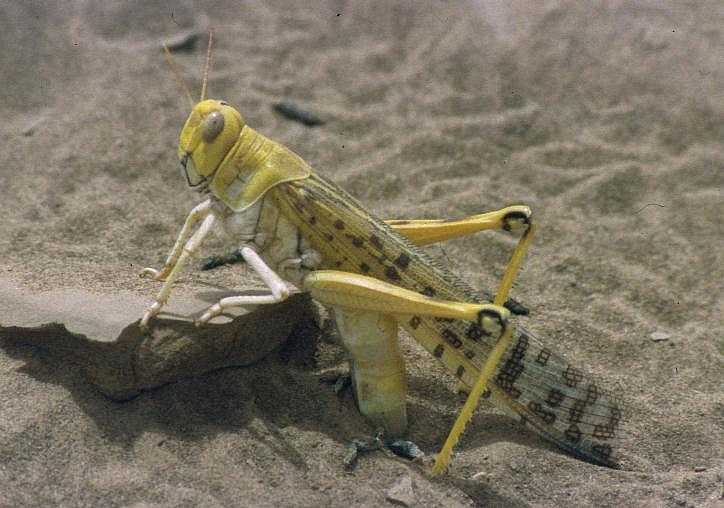Facts for Kids
Desert locusts are highly mobile and gregarious insects known for their ability to form large swarms that devastate crops and vegetation in arid regions.
Overview
Role In Ecosystems
Behavior And Swarming
Impact On Agriculture
Habitat And Distribution
Life Cycle And Reproduction
Current Research And Studies
Control And Management Strategies
Historical Events And Infestations

Inside this Article
Middle East
East Africa
Information
Population
Kilometer
Genetics
Becoming
Pakistan
Desert
Did you know?
🐜 Desert locusts can form swarms of billions of individuals, making them one of the most destructive migratory pests.
🌍 These insects can travel up to 150 kilometers (93 miles) in a single day in search of food and suitable habitats.
🌱 Desert locusts primarily feed on grasses and cereal crops, causing severe agricultural damage.
⚠️ A swarm of desert locusts can consume the same amount of food in a day as 2,500 people.
🌡️ Their swarming behavior is triggered by environmental factors such as rainfall and vegetation growth.
🌕 Desert locusts can change their color and behavior when they transition from solitary to gregarious phases.
🦗 They are typically found in arid and semi-arid regions, including parts of Africa, the Middle East, and Asia.
🔄 Desert locusts can reproduce rapidly, with a female laying up to 80 egg pods containing around 30-100 eggs each.
🚫 Pest control measures are challenging due to the locusts' ability to migrate over vast distances.
📊 The United Nations Food and Agriculture Organization (FAO) monitors and reports on Desert locust outbreaks globally.
Introduction
Role In Ecosystems
They help break down plant material and recycle nutrients back into the soil. When locusts eat plants, it encourages new growth, as many desert plants have adapted to survive. Additionally, they serve as food for birds, lizards, and other predators. 🌿
However, when swarms become too large, they can cause instability in the ecosystems as they consume plants needed by other species, affecting the balance of nature.
Behavior And Swarming
Impact On Agriculture
Habitat And Distribution
Life Cycle And Reproduction
The female locust lays about 100-200 eggs in sandy soil, and they hatch in 10 days! Once they hatch, locusts are called nymphs or hoppers. 🦗
Nymphs are wingless and molt several times before becoming adults. This process takes around 6 weeks! Once they become adults, they can start reproducing, and a single female can lay enough eggs to create a massive swarm in just a few weeks!
Current Research And Studies
Control And Management Strategies
Historical Events And Infestations
One of the most famous infestations took place in 1954-1955 when swarms affected about 20 million people in Africa! More recently, in 2019-2021, a large outbreak occurred in East Africa, with a peak of swarms so massive they reached India. These events often prompt international response and aid efforts to help affected countries and farmers recover from the damage caused by these extraordinary insects.

